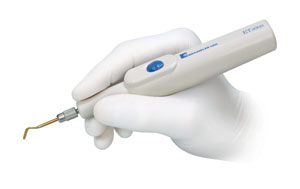Home › Forums › Endodontics & conservative dentistry › posterior composites
Welcome Dear Guest
To create a new topic please register on the forums. For help contact : discussdentistry@hotmail.com
- This topic has 2 replies, 2 voices, and was last updated 01/12/2011 at 4:28 pm by
 drmithila.
drmithila.
-
AuthorPosts
-
09/11/2011 at 8:24 am #10108
Anonymous
OnlineTopics: 0Replies: 1149Has thanked: 0 timesBeen thanked: 1 timeAdvances in material sciences and technology have provided today’s clinicians the strategies to transform the mechanistic approach of operative dentistry into a biologic philosophy.
Advances in material sciences and technology have provided today’s clinicians the strategies to transform the mechanistic approach of operative dentistry into a biologic philosophy. In the last three decades, composite resins have gone from being just an esthetically pleasing way of restoring Class III and Class IV cavities to become the universal material for both anterior and posterior situations as they closely mimic the natural esthetics while restoring the form of the human dentition. In order to enhance their success, clinicians have to rethink their protocol instead of applying the same restorative concepts and principles practiced with metallic restorations. Paralleling the evolution of posterior composite resin materials, cavity designs, restorative techniques and armamentarium have also developed rapidly to successfully employ composite resins in Class II situations. Most of the earlier problems with posterior composites such as poor wear resistance, polymerization shrinkage, postoperative sensitivity, predictable bonding to dentin, etc., have been overcome to a major extent. However, the clinically relevant aspect of achieving tight contacts in Class II situations has challenged clinicians the most.
01/12/2011 at 4:28 pm #14906 drmithila
OfflineRegistered On: 14/05/2011Topics: 242Replies: 579Has thanked: 0 timesBeen thanked: 0 times
drmithila
OfflineRegistered On: 14/05/2011Topics: 242Replies: 579Has thanked: 0 timesBeen thanked: 0 timesThe placement of composite resins in the cavity preparation is always a stressful. It is typically better for long-term wear and function to use hybrid materials for posterior restorations; their downside is that they are rather viscous and may not manipulate well into all the nooks and crevices of the cavity. This maladaptation cannot be seen by the operator and risks bubbles, air spaces, and marginal gaps. The solution is most often to use a less viscous flowable resin in high-risk areas. The downside of this compromise approach is that most flowables are not as strong or wear-resistant as hybrids. Brasseler USA has introduced the ET3000 oscillating composite manipulation instrument (OCMI), the first vibrational device that can effectively overcome both the stickiness and the lack of flow of the more highly filled composite resins. It eliminates the stickiness and tug back of composites after they are placed into the cavity, allowing them to flow more efficiently into the less accessible recesses and for the development of anatomy. The instrument’s oscillations increase hybrid composite flow by 30%. The ET3000 OCMI is well balanced and lightweight, cordless, and very portable. The 14 different tip designs can accommodate every clinical requirement, from preventive pit and fissure procedures to Class I through V restorations, always reducing the occurrence of voids and air bubbles. The chucking system is quick and intuitive. The lithium ion battery can operate for many hours on a single charge. The ET3000 is also very useful in shaping and contouring the surface anatomy of any composite prior to polymerization, reducing the need and time for adjustment and polishing
01/12/2011 at 4:28 pm #14907 drmithila
OfflineRegistered On: 14/05/2011Topics: 242Replies: 579Has thanked: 0 timesBeen thanked: 0 times
drmithila
OfflineRegistered On: 14/05/2011Topics: 242Replies: 579Has thanked: 0 timesBeen thanked: 0 times -
AuthorPosts
- You must be logged in to reply to this topic.
